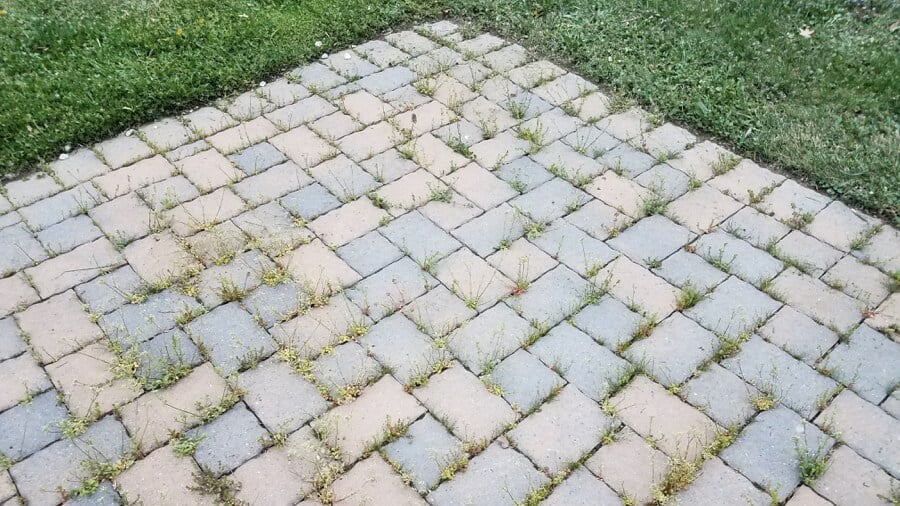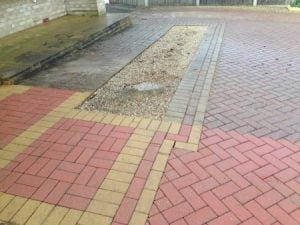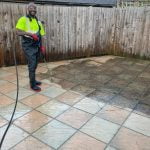Discover the key difference between indoor and outdoor grout and understand why selecting the right one is crucial. Discover expert tips from ADC Pressure Washing, your local UK-based exterior cleaning specialist.
Overview
If you’re planning a tiling project or have noticed some wear and tear on your grout, understanding the difference between indoor and outdoor grout is crucial. At ADC Pressure Washing, we understand the importance of selecting the right grout to ensure durability, appearance, and long-term performance—especially in the variable weather conditions of the UK. Whether you’re renovating a bathroom or restoring a patio, the wrong grout can lead to cracking, staining, or even water damage.
In this blog, we’ll cover the key differences between indoor and outdoor grout, explain why choosing the right grout matters, and offer tips on how to maintain it once it’s installed.
What Is Grout and Why Does It Matter?
Grout is the material used to fill the gaps between tiles. While it may seem like a small part of your tiling project, it’s vital to the overall strength and finish of the surface. It prevents water from seeping under the tiles, provides aesthetic value, and helps keep tiles in place.
But not all grout is created equal. There is a significant difference between indoor and outdoor grout, and using the wrong type in the wrong place can lead to serious problems.

Indoor vs Outdoor Grout: The Key Differences
Let’s break down the differences between indoor and outdoor grout in terms of material, performance, and suitability for specific use cases.
1. Weather Resistance
- Indoor grout is typically not designed to withstand harsh weather. It’s designed for environments with stable temperatures and humidity—such as kitchens, bathrooms, or living rooms.
- Outdoor grout, on the other hand, is specially formulated to cope with rain, frost, UV exposure, and temperature fluctuations.
Using indoor grout outdoors? That’s a shortcut to crumbling joints and potential water damage.
2. Material Composition
- Indoor grout is often cement-based and comes in two types: sanded and unsanded. These are suitable for interior floors and walls but are less resistant to moisture and abrasion.
- Outdoor grout may include additional polymers or epoxy to boost its water resistance and strength.
Epoxy grout remains a popular choice for both indoor wet rooms and external patios because it’s non-porous and highly durable.
3. Flexibility and Movement
- Interior spaces are relatively stable, so traditional grout doesn’t need to be highly flexible.
- Outdoor areas, such as driveways or patios, expand and contract due to changes in weather conditions. That’s why outdoor grout needs more flexibility to prevent cracking.
This is one of the most critical significant differences between indoor and outdoor grout—flexibility helps keep the surface intact for longer.
4. Aesthetic Requirements
- Indoor grout often prioritises appearance. With a wide range of colors and finishes available, homeowners can match grout to interior décor.
- Outdoor grout prioritises function over form. It still comes in different colors, but durability and protection against mould or algae growth are more important.
5. Drying and Curing Time
- Indoor grout usually cures faster in controlled environments.
- Outdoor grout might require longer curing times and specific weather conditions for proper setting.
Rain can wash away grout not designed for outdoor use if it occurs during the curing process. That’s why our team at ADC Pressure Washing always recommends professional advice before application.
Why Choosing the Right Grout Matters
Now that you understand the difference between indoor and outdoor grout let’s explore why this matters for the safety and value of your property.
Prevents Costly Repairs
Using the wrong grout type can lead to water penetration, loosening tiles, or structural issues. Once water seeps under tiles, especially outdoors, it can freeze and expand, causing the surface to crack.
Enhances Longevity
Outdoor grout is designed to withstand harsh conditions. Choosing the right product means fewer replacements and a longer-lasting tiled area.
Improves Aesthetics
Crumbling or discolored grout can make even the nicest tiles look neglected. Proper grout choice maintains a clean, sharp look indoors and outdoors.

Where Each Grout Type Should Be Used
Indoor Grout – Best for:
- Bathroom floors and walls
- Kitchen splash backs
- Interior flooring
- Laundry rooms
Outdoor Grout – Best for:
- Patios and terraces
- Driveways
- External walls
- Garden paths and decking
If you’re unsure, our professionals at ADC Pressure Washing can assess your surfaces and recommend the right grout or resealing method.
Common Mistakes When Choosing Grout
- Using indoor grout for patios or driveways leads to rapid degradation.
- Ignoring grout sealing – Both indoor and outdoor grout need proper sealing to resist moisture and stains.
- Choosing grout by color only – Aesthetic is essential, but always prioritize performance.
How We Help at ADC Pressure Washing
We don’t just clean your surfaces—we restore and protect them. Our team offers comprehensive outdoor grout cleaning and maintenance services. Whether your patio grout is cracking or your driveway joints are filled with weeds and moss, we can:
- Deep clean and remove dirt, algae, and stains
- Replace or repair worn-out outdoor grout
- Apply professional-grade sealant to increase durability
We understand the impact of the difference between indoor and outdoor grout on the performance of your surfaces. That’s why we tailor our services specifically to UK weather conditions and property types.
Tips to Maintain Outdoor Grout
Maintaining outdoor grout ensures it stays intact and visually appealing. Here are some easy tips:
- Seal it regularly: We recommend sealing grout every 1–2 years, depending on the frequency of foot traffic and weather exposure.
- Clean with the right products: Avoid harsh chemicals that can break down grout. Use neutral pH cleaners.
- Pressure wash professionally: DIY pressure washing may harm grout. In contrast, ADC Pressure Washing applies controlled pressure to ensure safe and effective cleaning.
- Watch for cracks: Small cracks can become big problems. Early intervention saves money.
Final Thoughts: Indoor and Outdoor Grout Are Not Interchangeable
To summarise, the difference between indoor and outdoor grout lies in their formulation, flexibility, and resistance to external conditions. Using the wrong type can not only reduce the life of your tiling but also affect safety and appearance.
When in doubt, always consult with a professional—especially when it comes to external surfaces. At ADC Pressure Washing, we’ve helped countless UK homeowners and businesses protect their outdoor spaces with the right grout maintenance and care.


























